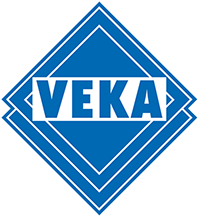Perfectline

The Perfectline multi-chamber profiles provide excellent thermal insulation. Perfectline profiles, equipped with a glazing unit with a warm frame with a heat transfer coefficient of 1.0 W/m²K, make it possible to build windows with Uw= 1.2 W/m²K. If the glass unit offers even better thermal performance, the U of the entire window can be lower than 1.0 W/m²K.

 The profiles have an external wall thickness of 3 mm (with a possible deviation of +- 0.2 mm), classifying them as Class A, according to RAL standards. Perfectline are profiles manufactured entirely in a 5-chamber system. Both the frame profiles and most of the sashes feature 5 chambers. The sash and frame profiles are only 118 mm high in total, providing a larger glazing area and better illumination of the rooms.
The profiles have an external wall thickness of 3 mm (with a possible deviation of +- 0.2 mm), classifying them as Class A, according to RAL standards. Perfectline are profiles manufactured entirely in a 5-chamber system. Both the frame profiles and most of the sashes feature 5 chambers. The sash and frame profiles are only 118 mm high in total, providing a larger glazing area and better illumination of the rooms.
Glass units with a thickness of 6 to 42 mm can be fitted in the Perfectline profiles. With the use of an additional element - the thickness increases to as much as 49 mm. With the right glazing unit and correct installation, windows featuring Perfectline profiles meet Class 6 sound insulation requirements (noise reduction of up to 50 dB). They therefore work well in buildings located, for example, close to expressways.
The installation depth of the glazing unit in the profiles is 21 mm, making the windows less prone to dewing. They are also more difficult to breach. Perfectline profiles use two external seals to protect against noise and cold from the outside. The seals were installed with a 15-degree slope, as were the profiles themselves. This ensures that water and dirt run off quickly from the outer parts of the windows. The seals are available in black, grey or caramel to match the colours of the profiles.
The profiles are produced in several variants so that the window sashes can be flush with the frame to varying degrees. In the Perfectline Standard variant, the sash and frame are not flush, have slightly rounded edges and are uniformly finished. A palette of solid colours with a matt or glossy finish is available, as well as foils reproducing the texture and colour of wood (in more than a dozen shades). The windows can also have aluminium covers, which can be powder-coated in any colour.
Perfectline profiles can be coloured in what is known as coextrusion. The outer wall of the profile, on which the film will be adhered, is made of plastic dyed in a colour similar to that of the film. This will make any scratches and mechanical damage less visible.

 The profiles have an external wall thickness of 3 mm (with a possible deviation of +- 0.2 mm), classifying them as Class A, according to RAL standards. Perfectline are profiles manufactured entirely in a 5-chamber system. Both the frame profiles and most of the sashes feature 5 chambers. The sash and frame profiles are only 118 mm high in total, providing a larger glazing area and better illumination of the rooms.
The profiles have an external wall thickness of 3 mm (with a possible deviation of +- 0.2 mm), classifying them as Class A, according to RAL standards. Perfectline are profiles manufactured entirely in a 5-chamber system. Both the frame profiles and most of the sashes feature 5 chambers. The sash and frame profiles are only 118 mm high in total, providing a larger glazing area and better illumination of the rooms.Glass units with a thickness of 6 to 42 mm can be fitted in the Perfectline profiles. With the use of an additional element - the thickness increases to as much as 49 mm. With the right glazing unit and correct installation, windows featuring Perfectline profiles meet Class 6 sound insulation requirements (noise reduction of up to 50 dB). They therefore work well in buildings located, for example, close to expressways.
The installation depth of the glazing unit in the profiles is 21 mm, making the windows less prone to dewing. They are also more difficult to breach. Perfectline profiles use two external seals to protect against noise and cold from the outside. The seals were installed with a 15-degree slope, as were the profiles themselves. This ensures that water and dirt run off quickly from the outer parts of the windows. The seals are available in black, grey or caramel to match the colours of the profiles.
The profiles are produced in several variants so that the window sashes can be flush with the frame to varying degrees. In the Perfectline Standard variant, the sash and frame are not flush, have slightly rounded edges and are uniformly finished. A palette of solid colours with a matt or glossy finish is available, as well as foils reproducing the texture and colour of wood (in more than a dozen shades). The windows can also have aluminium covers, which can be powder-coated in any colour.
Perfectline profiles can be coloured in what is known as coextrusion. The outer wall of the profile, on which the film will be adhered, is made of plastic dyed in a colour similar to that of the film. This will make any scratches and mechanical damage less visible.

 EN
EN PL
PL DE
DE



